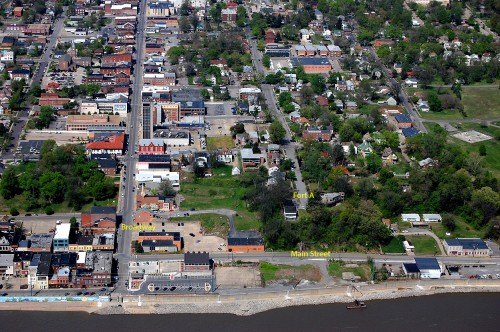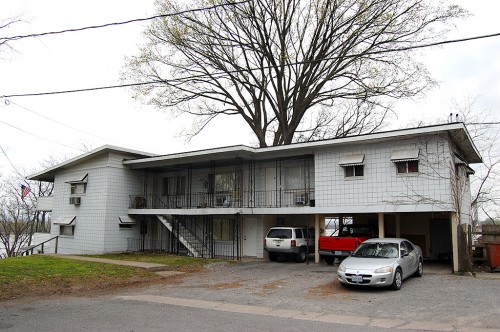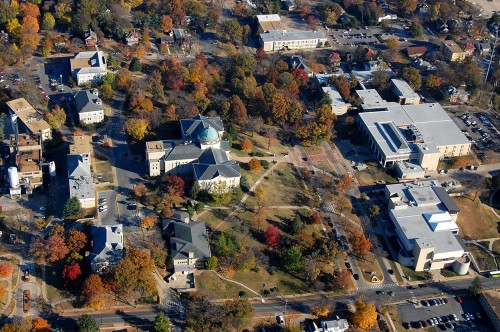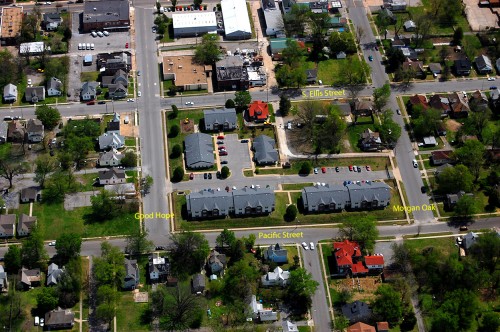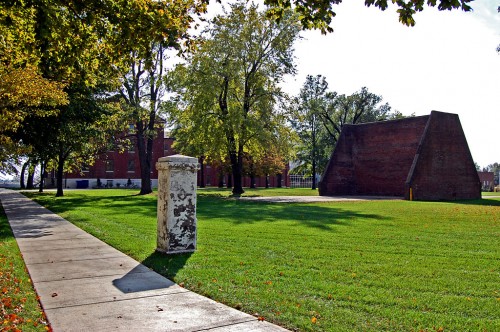 There were a number of things that let me know I was getting close to home: going down that last hill at Thebes Gap, catching the first glimpse of the Mississippi River as it curved around Gray’s Point, spotting the Common Pleas Courthouse and the dome of Academic Hall poking above the trees… Once we made the white-knuckle passage across the Traffic Bridge, I’d look off to the left, not to see St. Vincent’s College, but to spy the strange brick structure on its lawn. I didn’t know exactly what it was, but it was a sign that I was home.
There were a number of things that let me know I was getting close to home: going down that last hill at Thebes Gap, catching the first glimpse of the Mississippi River as it curved around Gray’s Point, spotting the Common Pleas Courthouse and the dome of Academic Hall poking above the trees… Once we made the white-knuckle passage across the Traffic Bridge, I’d look off to the left, not to see St. Vincent’s College, but to spy the strange brick structure on its lawn. I didn’t know exactly what it was, but it was a sign that I was home.
When I researched a piece on the 5th anniversary of the River Campus, I discovered a report filed with the National Register of Historic Places saying the court was constructed in 1843 and was supposed to have been the first handball court west of the Mississippi River.
James Baughn reads the fine print
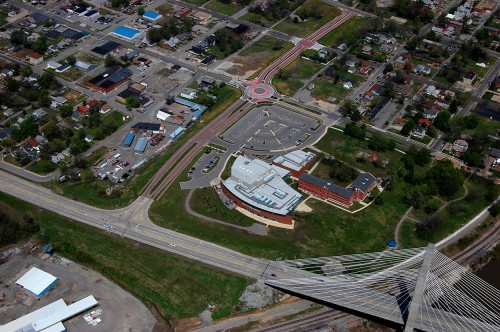 The December 16 Missourian ran a routine story about the SEMO regents approving 96,000 square feet of new construction at the River Campus. There was an aerial photo overlay, but I’m sure most readers didn’t look at it closely. I’m guilty as charged.
The December 16 Missourian ran a routine story about the SEMO regents approving 96,000 square feet of new construction at the River Campus. There was an aerial photo overlay, but I’m sure most readers didn’t look at it closely. I’m guilty as charged.
Missourian webmaster James Baughn, who does one of three must-read blogs in the paper, is one of those detail kind of guys who notices things. He discovered that the new construction will erase one of the oldest structures in Cape Girardeau, one built by Joseph Lansman. Who is he? Thanks to Baughn’s research, we find that he was the guy who was probably responsible for SEMO being in Cape in the first place.
Baughn notes “[Louis] Houck was able to work his magic to steer the newly formed Board of Regents toward Cape, but Lansman helped seal the deal. He agreed to donate land he owned at the site of Fort B, the old Civil War fortification on a hilltop north of town, well away from the mosquito-laden swamps. During a crucial meeting at the St. Charles Hotel (built by Lansman), the regents made the final selection of Lansman’s site for the new college.”
SEMO, which touts one of the few undergraduate historic preservation programs in the country, assures us that they will incorporate a “select” number of bricks from the handball court into the facade of the new River Campus building. If they were in Philadelphia, they’d probably scrap The Liberty Bell and incorporate the clapper as a door knocker. I mean, why hang on to that old thing? Nobody’s going to ring it with that crack in it.
Holy Crapola! I’ve been ripped off
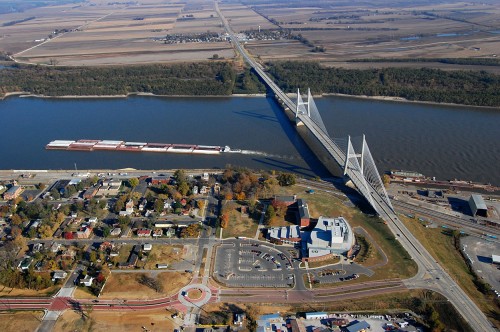 I followed a link on Baugn’s blog to a SEMO publication that details the constuction project. Guess what they have on the first two pages? This copyrighted aerial photo showing the River Campus I shot November 6, 2010. I can’t wait to make some phone calls tomorrow morning to SEMO and the Lawrence Group to talk about appropriating photographs for commercial use without compensation. (As always, you can click on the photos to make them larger.)
I followed a link on Baugn’s blog to a SEMO publication that details the constuction project. Guess what they have on the first two pages? This copyrighted aerial photo showing the River Campus I shot November 6, 2010. I can’t wait to make some phone calls tomorrow morning to SEMO and the Lawrence Group to talk about appropriating photographs for commercial use without compensation. (As always, you can click on the photos to make them larger.)
Frame Two of my purloined photo shows clearly that they are targeting the lawn and handball court area that gives the site its quiet beauty, second only to the trees area and terraces overlooking the river. (They’ll go next and SEMO will sell “preservation toothpicks” made of the trees.) It would appear to me that there is plenty of space occupied by parking lots that would be perfect for the expansion. Put two floors of parking under the new buildings and you could leave the lawns and terraces alone.
Thanks, Mr. Baughn, for the heads-up.

